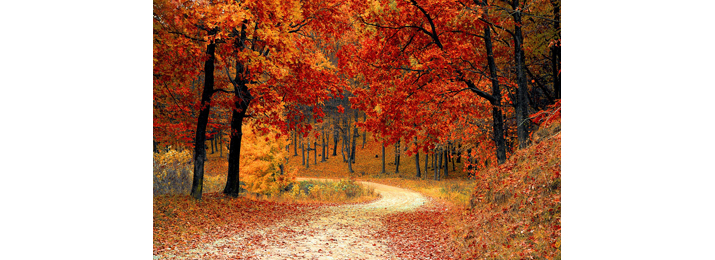With the arrival of autumn marking the start of longer nights and shorter days, you may be feeling an early case of the winter blues taking hold. But it’s not all doom and gloom! Being the most colourful season means that autumn brings us a stunning array of colours that will soon adorn trees in the coming weeks. But why exactly do leaves change colour?
Forestry Commission England has recently put together an autumn colour guide, helping us to understand the science behind the vibrance.
Green
Chlorophyll, a green pigment, is commonly found in abundance in plants during the spring and summer months. It is the main chemical involved in photosynthesis, reflecting green light which gives leaves their colour. When the shorter days arrive and leaves receive less sunlight, trees will typically look to store their sugars by withdrawing nutrients from their leaves. While chlorophyll breaks down throughout the year, the process accelerates during autumn to reveal other colourful pigments.
Red
Unlike others, red is not a colour that has always existed in leaves. The colour is produced from anthocyanin compounds, which are originally formed as the amount of chlorophyll reduces. Data from the Met Office showed that this years’ spring was unusually wet, while summer was unusually warmer and sunnier. This combination will mean there are higher levels of sugar in plant tissues, especially anthocyanin molecules, which will lead to a more vibrant range of colours to look forward to this year.
Orange
We think this one is in the name, but carotenes are responsible for giving leaves, as well as carrots, their bright orange colour. The pigment is known to have an important role in photosynthesis, but it can also protect plants which are over-exposed to sunlight. One of the best plants to see carotene in action is the sweet chestnut!
Yellow
The yellow xanthophyll pigment is caused by oxygenated carotenes. As chlorophyll breaks down, leaves will naturally turn yellow as the pigment is no longer masked by the green hue. The colour can be seen for all its beauty in trees such as birches, beeches, ashes and field maples.
Variations in nature will change how autumn appears to us year after year, so we can’t wait to see the colourful show that 2016 has in store!

